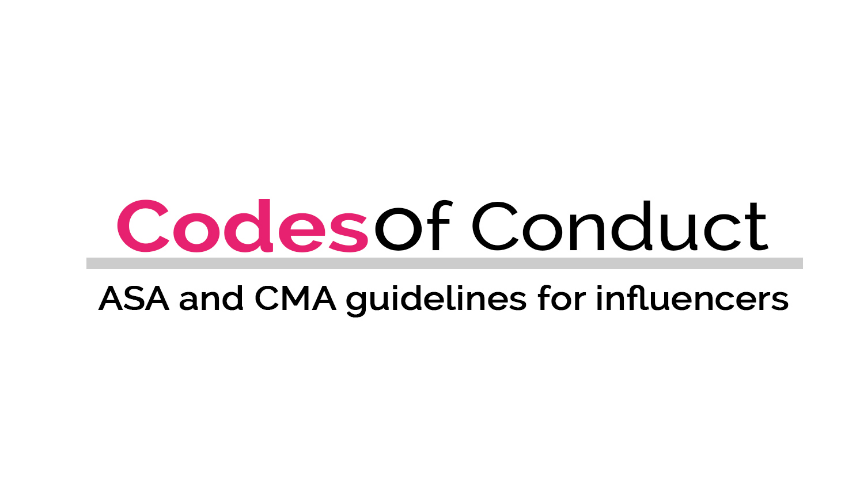 BEAUTY | FASHION | LIFESTYLE | MEDIA | CELEBRITIES / INFLUENCERS | INDUSTRY|INSIGHT
BEAUTY | FASHION | LIFESTYLE | MEDIA | CELEBRITIES / INFLUENCERS | INDUSTRY|INSIGHT
Industry codes of conduct - ASA and CMA guidelines for influencers
Date posted on DIARY directory: Monday 11th March 2019
The UK's primary competition and consumers authority, the Advertising Standards Agency (ASA) recently unveiled The Influencer’s Guide in collaboration with the Competition and Markets Authority (CMA) to make sure that social influencers adhere to the Advertising Codes written by the Committees of Advertising Practice (CAP). The guide explains the rules around social media advertising, what the ASA considers to be an ad, how to disclose a post is an advert, what the CMA’s requirements are and what happens if someone complains to the ASA about a post on social media.
What counts as an ad/advertorial?
Under the CAP Code, if you work with a brand to create some content that you’ll be posting on your own channels, it’ll qualify as an ad if the brand ‘paid’ you in some way (can be freebies, doesn’t have to be money) and had some form of editorial ‘control’ over the content, including just final approval. Under the CAP Code, it’s not an ‘either/or’ – there has to be both ‘payment’ and ‘control’ for this type of post to count as an ad.
However, in direct contrast, the CMA states that consumer protection legislation still applies where there has been ‘payment’ (i.e. any form of monetary payment, a loan of a product/service, any incentive and/or commission or the product/service has been given free) but no ‘control’. Therefore, despite the CAP Code's distinction that it is not an either/or situation, this is not the case with the CMA - if you feature a gifted item on social media you must disclose this detail or potentially face penalties.
What counts as ‘payment’ for advertorial content?
If you’re paid a specified amount of money to create and/or post a particular piece of content, this counts as ‘payment’ but this isn’t the only type of arrangement that counts. If you have any sort of commercial relationship with the brand, such as being paid to be an ambassador, or you’re given products, gifts, services, trips, hotel stays etc. for free, this is all likely to qualify as ‘a payment [or other reciprocal arrangement]’.
What counts as ‘control’ for advertorial content?
As a rule of thumb, if you weren’t completely free to do and say whatever you wanted whenever you wanted, then there could have been some level of editorial ‘control’ by the brand. Control can be classified as any of the below:
- If you are required to use particular words, phrases, themes, ‘key messages’ and hashtags.
- If the brand has required your video or imagery to look a certain way.
- If a brand requires you to post a specific number of times, on certain dates or at particular times.
- If a brand reserves the right to check/approve the content before it’s posted and/or to ask you to make changes.
If you are completely free to say and do as you wish then the brand has had no control over the content you have created.
What if there’s ‘payment’ but no ‘control’?
If you’ve been ‘paid’ (either in money or in gifts/freebies), but it isn’t as part of an affiliate arrangement and the brand doesn’t have any ‘control’ of what (or even if) you post, it’s unlikely that the content will count as advertising under the CAP Code. However, the CMA expects influencers to disclose when they’ve received any form of monetary payment, a loan of a product or service, any incentive and/or commission or have been given the product they’re posting about for free.
How do I make clear that ads are ads?
Under the CAP Code ads ‘must be obviously identifiable as such’. This means that consumers should be able to recognise that something is an ad, without having to click or otherwise interact with it. Affiliate marketing and advertorial content are much less likely to be clearly recognisable by context alone so you need to work harder to make it clear.
We know that the ASA likes labels that just say it how it is, e.g. Ad, Advert, Advertising, Advertisement, Ad/Advertising/Advertisement Feature.
Other labels are riskier, and although it will always depend on the wider content and context, the guide recommends staying away from Sponsorship, Sponsored content, Spon, #Spon, #Sp, 'In association with', 'Thanks to [brand] for making this possible' and just @ mentioning the brand.



.jpg)
.jpg)